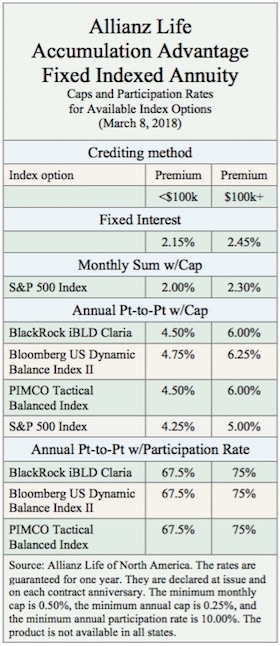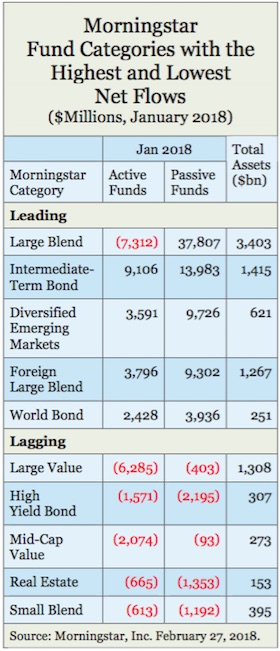
Winston Churchill’s famous speech about defending Britain on the beaches, landing grounds, fields, streets, and hills—“We shall never surrender,” the scowling cigar smoker snarled—was invoked at the Insured Retirement Institute’s marketing conference in Orlando this week. His words couldn’t have been more fitting.
Like Britain in 1940, the IRI (and the annuity issuers and sellers for whom it has lobbied since 2008) needs a rallying cry. Eight years of hostility from the Obama administration, a nine-year bull market in risky assets, and a decade of low interest rates have taken a gradual but unmistakable toll on the annuity industry.
Annuity sales are now at their lowest point in two decades. At a time when the insurance industry hoped and expected that Boomers would be buying personal pensions, stocks have eclipsed annuities—to the point where annuity issuers are touting their products as ways for risk-averse investors to obtain equity exposure.
With a patently pro-business administration in power, you might expect IRI’s mood to be buoyant. The political wind is at its back, and the Retirement Enhancement Security Act, which it favors, could pass very soon. But optimism didn’t seem especially high in Orlando. Either the Trumpian tailwind is too volatile to inspire confidence or the IRI is marking time; no successor to retiring CEO Cathy Weatherford has yet been named. Or perhaps there was a lot of activity in the side-meetings to which RIJ didn’t have access.
On the other hand, several big annuity issuers tent-poled the conference with sponsorships and speakers with energetic new stories to tell. They included AXA, Brighthouse Financial (formerly MetLife’s retail division), Great-West Financial, Jackson National Life, and New York Life.
The GMAB: Back again for the first time
New York Life’s Renee Hamlen used her time at the podium to announce that her company intends to distribute an old product (a variable annuity with a guaranteed minimum accumulation benefit (GMAB) through a new channel (third-party distributors and advisors) as well as through its captive agents.
The GMAB product promises that a given premium will grow to at least a specific size over a specific term. New York Life’s GMAB features 10, 12, 15 and 20-year terms. New York Life claimed a 52% market share in this product niche in 2016, with sales of about $3 billion.
Hamlen, a vice president and head of annuity marketing at New York Life, said that product attracts a younger client (average age 53) than a VA with a lifetime income benefit. A New York Life survey of 350,000 GMAB policyholders showed that they hold about 20% more in equities than people without the protection.
The benefit’s expense (1.30% per year) will be applied to the premium, not the account value or the benefit base. “We won’t be charging clients for growth,” Hamlen said. An enhanced death benefit would cost 0.25% per year more. “This is a market expansion for some of us,” she added. “Guaranteed income isn’t necessarily what all of our clients want.”
Nag-Bushan Odekar, the vice president of individual marketing at Great-West Life and Annuity Insurance Co., then discussed the benefits of product diversification during retirement. He demonstrated that a portfolio with a combination of risky and insured assets delivers the highest annual incomes over time.
Odekar showed that a person with $1 million of invested savings at age 65 could generate as little income as $34,873 from a 60% stock/40% bond portfolio (through Bengen’s “4%” method adjusted downward for today’s low interest rates, perhaps) and as much income as $65,300 a year by purchasing a single premium immediate annuity (SPIA), at current rates.
 But similar $1 million investors (assuming of course that they lived long enough to collect on their longevity bets) could greatly increase his income, Odekar demonstrated, by using a hybrid investment strategy that involved a variable annuity with a lifetime income benefit (VA/GLWB) and a deferred income annuity (DIA) as well as a SPIA and investments.
But similar $1 million investors (assuming of course that they lived long enough to collect on their longevity bets) could greatly increase his income, Odekar demonstrated, by using a hybrid investment strategy that involved a variable annuity with a lifetime income benefit (VA/GLWB) and a deferred income annuity (DIA) as well as a SPIA and investments.
By age 85, he said, someone with about 39% of their money in the VA/GLWB, 20% in a DIA, 31% in a 60/40 portfolio and 10% in a SPIA would have an income of $94,316. By comparison, someone with only a 60/40 portfolio could expect about $63,000 at that age and someone with only a SPIA could expect $65,300–the same as at age 65.
Living up to Snoopy
In his turn on stage, Jackson National Life marketing chief Dan Starishevsky discussed his firm’s new marketing initiative, whose slogan is “retire On Purpose.” A booklet based on that theme, to be distributed by Jackson wholesalers to advisors for use with clients, employs questions and word clouds to help clients start articulating their vision for retirement.
The concept is not unprecedented–many advisors have used flash cards or “roadmaps” to help clients visualize the events and challenges they might face in retirement. For that very reason, it’s a high-percentage bet. The lightly branded booklet by itself may not drive sales, but it may support those advisors who are already inclined to recommend Jackson products.
Jackson is currently reorganizing its geographical positioning. As reported in the Denver Post last month, the company is closing its Denver-area office and laying off 370 people there. It is also downsizing in Wisconsin, Florida and California. At least some Denver-based workers will relocated to Nashville. Jackson National, a unit of Britain’s Prudential Plc, is based in Lansing, Michigan.
Brighthouse Financial’s head of marketing, Alex Dowlin, shared some insights gleaned from the company’s Financial Insights Panel. The former retail division of MetLife, now a publicly-held company partly-owned by MetLife, has engaged psychologists and economists to help it craft a distinctive, authoritative voice through thought-leadership efforts. “We’re a year into this,” he said.
Brighthouse wants to sponsor “evergreen” content that “will empower advisors to have more product conversations with their clients and build stronger advisor-client relationships,” Dowlin said. His reason for pursuing evergreen content: “Fidelity does a great job with real-time [news-based] content. We can’t compete with that.”
In-house surveys showed Brighthouse that its thought-leadership efforts should engender an image of “likability,” “relevancy,” “distinctiveness,” “believability” and “trustworthiness.” So far, the firm’s publications yielded high scores on trust but not so much on “optimism” and “distinctiveness.”
 That finding evidently tripped an alarm at Brighthouse. “We’re a company that prides itself on creating optimism,” Dowlin said, perhaps referring to MetLife’s long association with Snoopy and other beloved Peanuts cartoon characters. “The question is, ‘Does the content move the needle for the company?’ The content has to point to Brighthouse.’”
That finding evidently tripped an alarm at Brighthouse. “We’re a company that prides itself on creating optimism,” Dowlin said, perhaps referring to MetLife’s long association with Snoopy and other beloved Peanuts cartoon characters. “The question is, ‘Does the content move the needle for the company?’ The content has to point to Brighthouse.’”
Coaxing investors off the sidelines
AXA’s speaker at the conference was Brad Fiery, head of Insights and Analytics, which will soon be holding an IPO and separating legally from its French parent. Fiery presented the results of a survey conducted for AXA by the retirement research firm Greenwald & Associates.
The research involved a survey of investors ages 50 to 70 with between $300,000 and $1 million in investable assets. In that sense, their households were among the richest 25% of Americans. Much of the presentation consisted of videotapes of focus groups involving a half dozen people.
Each had less than 50% of their assets allocated to equities. Equity allocation tends to correlate with education; by their dress and manner of speaking, and their lack of financial expertise, they didn’t seem highly educated (although outward appearances, of course, can be deceptive).
The focus groups, in short, showed that this type of investor might hold a higher percentage of equities if they could do so through a product very like AXA’s popular Structured Capital Strategies indexed variable annuity. This product offers more downside protection than a variable annuity and more upside potential than an indexed annuity.
The product, which runs for terms of up to five years and doesn’t offer living benefit options, puzzled some people when AXA introduced it in 2010. But as of last May it had $10 billion in cumulative sales. Fiery told RIJ that AXA’s annuity sales would be flat without it. That success has inspired Allianz Life, Brighthouse, CUNA and (as of last month) Great-West to introduce similar products.
Also presenting at the conference was Ron Mastrogiovanni, CEO of HealthView Services and HealthyCapital, who spoke on the topic of using annuities to offset medical expenses in retirement. HealthView Services’ software “opens the door for advisors to offer investment strategies to cover health care expenses.”
Thumping Trump
If you like Donald Trump, you would probably not have enjoyed the keynote speech at the IRI conference. Jon Meacham, the Pulitzer Prize-winning biographer of Andrew Jackson and George H.W. Bush, was politely but unsparingly critical of the current president.
“There’s just not a lot going on there,” he said when asked to describe Trump’s psyche. “I’m not a partisan,” he added, “but the progression from Ronald Reagan to Donald Trump seems to disprove Darwinism.” Comparing the Trump White House to the president’s own long-running TV program, he said, “It’s a rolling reality show that unfortunately has real world effects.”
Our leaders, Meacham concluded, need to demonstrate three qualities in order to guide us through the crisis: Curiosity, Candor, and Empathy. Ideally, Meacham said, “a leader should point forward, not at other people.” More like Winston Churchill, that is.
© 2018 RIJ Publishing LLC. All rights reserved.




 But similar $1 million investors (assuming of course that they lived long enough to collect on their longevity bets) could greatly increase his income, Odekar demonstrated, by using a hybrid investment strategy that involved a variable annuity with a lifetime income benefit (VA/GLWB) and a deferred income annuity (DIA) as well as a SPIA and investments.
But similar $1 million investors (assuming of course that they lived long enough to collect on their longevity bets) could greatly increase his income, Odekar demonstrated, by using a hybrid investment strategy that involved a variable annuity with a lifetime income benefit (VA/GLWB) and a deferred income annuity (DIA) as well as a SPIA and investments. 
 That finding evidently tripped an alarm at Brighthouse. “We’re a company that prides itself on creating optimism,” Dowlin said, perhaps referring to MetLife’s long association with Snoopy and other beloved Peanuts cartoon characters. “The question is, ‘Does the content move the needle for the company?’ The content has to point to Brighthouse.’”
That finding evidently tripped an alarm at Brighthouse. “We’re a company that prides itself on creating optimism,” Dowlin said, perhaps referring to MetLife’s long association with Snoopy and other beloved Peanuts cartoon characters. “The question is, ‘Does the content move the needle for the company?’ The content has to point to Brighthouse.’”




.jpg)








